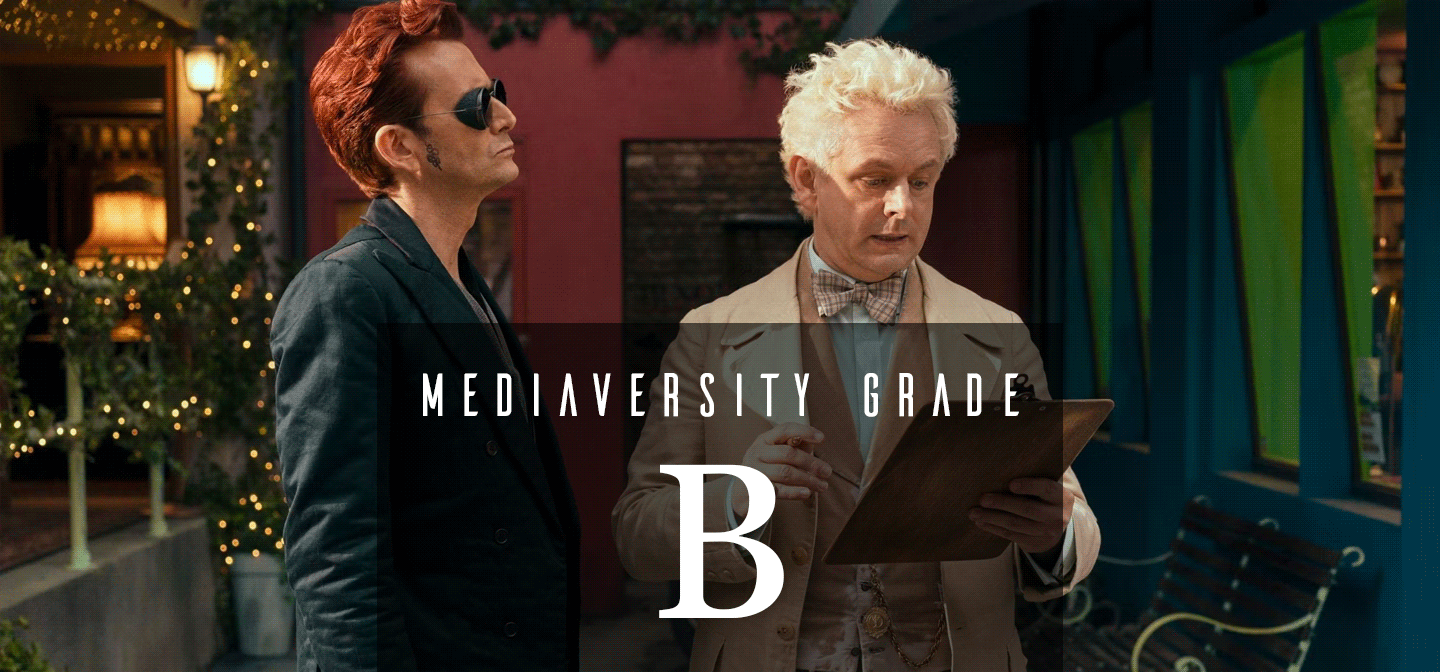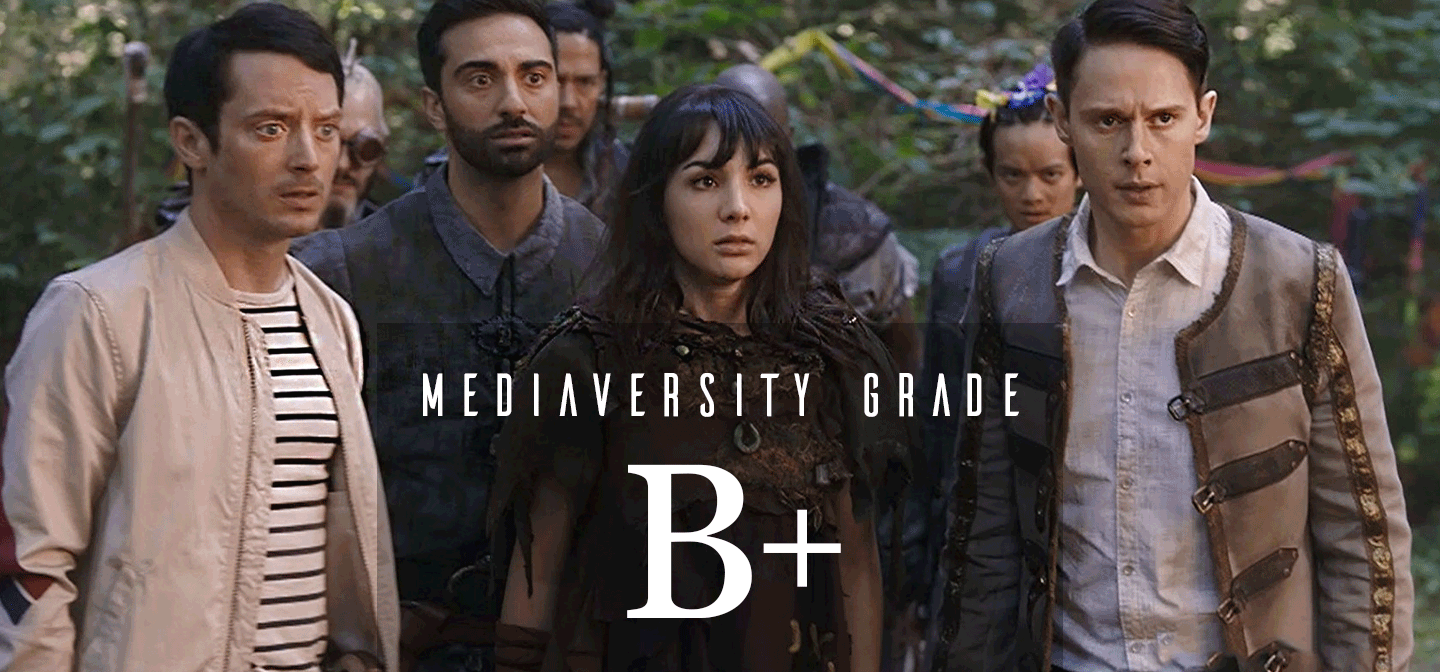Good Omens - Seasons 1-2
“In the world of Good Omens, it’s a refreshing approach that all characters should be considered queer until proven otherwise.”
Title: Good Omens
Episodes Reviewed: Seasons 1-2
Creator: Neil Gaiman 👨🏼🇬🇧
Writers: Neil Gaiman 👨🏼🇬🇧 (12 eps) and John Finnemore 👨🏼🇬🇧 (6 eps) based on the novel by Neil Gaiman 👨🏼🇬🇧 and Terry Pratchett 👨🏼🇬🇧
Reviewed by Sam 🧑🏻🇺🇸🏳️🌈
Technical: 4/5
Based on the 1990 novel co-written with Terry Pratchett, Neil Gaiman adapted his popular novel Good Omens for Prime Video in 2019. Since then, the show has been a hit for the streaming platform, lauded for its engaging story and casual centering of a queer couple. It combines fantasy with comedy, keeping viewers on the edge of their seats. Set in a universe where Heaven and Hell get involved in Earthly affairs, the story follows Aziraphale (Michael Sheen), a rule-abiding angel, and Crowley (David Tennant), a rebellious, rule-breaking devil. What draws these two together is their shared love for humanity and a desire to stop their respective sides from enacting Armageddon, effectively ending the world.
While the first season covers what’s written in the original book, Season 2 extends beyond the source material, providing more insight into the main characters. As a result, it relies less on the plot and more on the characters. Still, both do a great job of highlighting the relationship between Crowley and Aziraphale through hilarious and heartfelt historical flashbacks, providing a fantastic story about how an angel and a demon come together to prevent doomsday.
Gender: 3.5/5
Does it pass the Bechdel Test? YES, mostly
Although main characters Crowley and Aziraphale technically fall outside traditional gender categories, they present as male, and cisgender male actors portray them for most of the show. In comparison, supporting female characters lack solid stories and screen time.
This isn’t to say the series has no women at all. Season 1 has several positive examples: the wise witch Anathema (Adria Arjona), the zealous false medium and sex worker Madame Tracy (Miranda Richardson), and the young and imaginative Pepper (Amma Ris). However, these characters are each anchored to the men in their lives. In Season 2, shop owners Maggie (Maggie Service) and Nina (Nina Sosnaya), who work on the same street as Aziraphale, have a romantic arc, but they only show up when Crowley and Aziraphale meddle in their relationship. Additionally, their romance defines these two women, making them relatively flat compared to the two main characters.
On the plus side, the show does include nonbinary characters who use they/them pronouns. Examples include supporting characters such as the Duke of Hell Beelzebub (Shelley Conn), clueless angel Murie (Quelin Sepulveda), and one of the four horsemen, Pollution (Lourdes Faberes). Furthermore, Aziraphale and Crowley emphasize that they aren’t technically men. In several historical flashbacks, Crowley presents as female and does so again when pretending to be a nanny. Ultimately, Good Omens does a good job at providing nonbinary representation, but there’s room to improve on how it portrays women.
Race: 2.5/5
Good Omens takes a race-blind approach to casting. It’s an easy way to add diversity but one that prevents characters of color from connecting with their full range of identities. Those we do meet have supporting roles that lack backstory.
Among them, Anathema, played by Puerto Rican actor Arjona, has a compelling story as she grapples to simultaneously preserve her family legacy and pursue a sense of freedom without the burden of prophecy. Unfortunately, this internal conflict gets sidelined by her relationship with computer engineer Newt (Jack Whitehall), who’s white. Others, such as Pepper (played by Black Welsh actor Ris) and Nina (Sosnaya, who’s biracial Nigerian and English), are also defined by the white main characters around them. We never get to see their lives and desires as individuals, or among other people of color.
A glance behind the lens corroborates this onscreen result: The writers of Good Omens are white men. Creating nuanced, race-conscious scripts would be a big step forward in inclusion (and depth) for the series, but it’s a step that may be beyond this current team’s areas of expertise—at least, not without some racial and ethnic diversity in the writers room.
LGBTQ: 5/5
Good Omens’ defining trait is its amazing LGBTQ representation. As mentioned, the show centers around the queer couple Aziraphale and Crowley. And even before their romance was confirmed on screen, viewers have pointed out that their relationship has always been inherently queer. They function as de-facto parents for Adam Young (Sam Taylor Buck), the presumed antichrist child; they’ve known each other for 6,000 years; they’re painfully codependent; and they are always there to save each other from certain doom. They embody the epitome of a romantic relationship every queer person longs for.
The show furthers its queer cred in Season 2 with Maggie and Nina, two lesbians with a will-they-won’t-they romance. Their love story is adorable and full of fun tropes, such as gathering under an awning because of a sudden thunderstorm. Furthermore, Nina’s story addresses the nuances of queer partnerships. At the beginning of the season, she’s in a toxic relationship with her partner, and when she gets broken up with, Maggie helps her heal and learn about what love should truly look like.
In the world of Good Omens, it’s a refreshing approach that all characters should be considered queer until proven otherwise, especially when it comes to angels and demons whose genders are fluid and undefined. It’s radically inclusive, normalizing LGBTQ identities by integrating them into the story without using such narrative cliches as “coming out,” which center a straight gaze. Instead, Good Omens’ unapologetically queer characters are focused on preventing Armageddon, thank you very much.
Bonus for Disability: +0.25
Season 2’s Saraqael (Liz Carr) is an angel who uses a sleek, heavenly version of a wheelchair. During a brief scene, they magically summon a ramp so they can navigate into Aziraphale’s bookstore, which only has stairs at the entrance. It’s great that an actual wheelchair user was cast in this role.
Saraqael doesn’t play a particularly big role in the story, but their presence in heaven as a wheelchair user makes it clear that having a disability isn’t inherently negative. It’s a great model of how fantasy shows can include and empower disabled people on screen.
Mediaversity Grade: B 3.81/5
Good Omens celebrates the beauty and shortcomings of humanity that make it worth saving—a profound statement that should naturally be communicated through a richly diverse cast. And it does provide meaningful LGBTQ representation, but several areas need improvement, including the way women and characters of color are underwritten.
Since Prime Video has renewed the show for its third and final season, there’s a chance for Gaiman to implement these improvements. As viewers wait to see whether Aziraphale and Crowley can stop the war between Heaven and Hell once again, I hope Good Omens continues its pattern of showing queer people continuing to thrive and kick ass, while also seeing more complex takes on queer identity as influenced by race and disability. After all, that seems little to ask for in the face of the possible end of the entire world.




